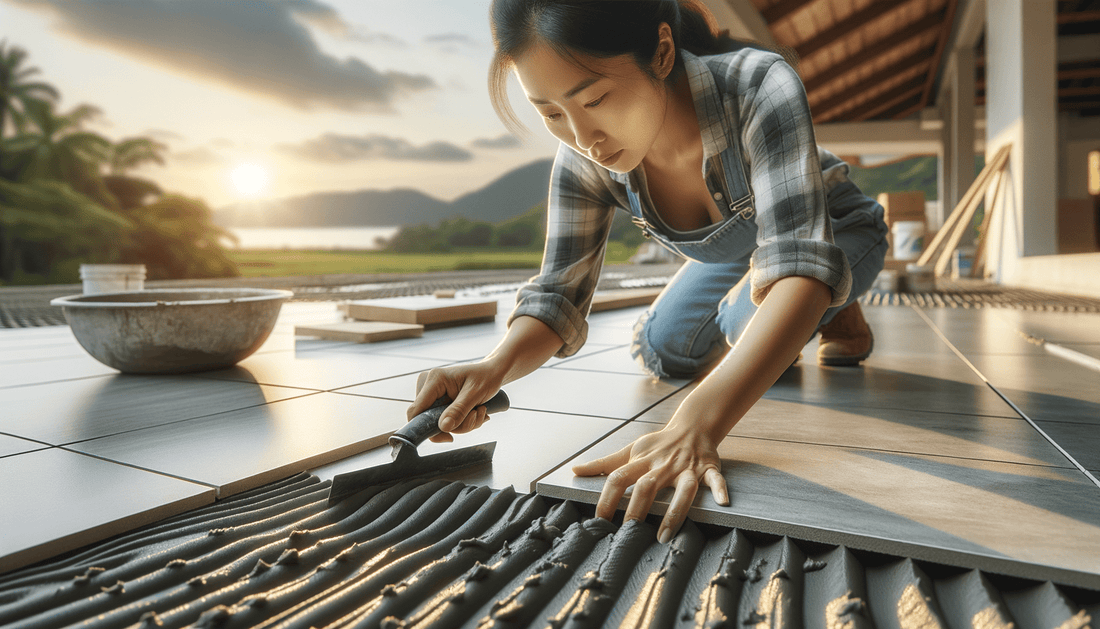Laying Porcelain Slabs with Tile Adhesive on Concrete: A Refined Approach for Luxurious Surfaces
Porcelain slabs have emerged as one of the most sought-after surface materials in high-end residential and commercial projects. Offering the sophistication of natural stone with remarkable durability and ease of maintenance, porcelain is ideal for seamless indoor and outdoor applications. Whether you're a discerning homeowner planning a spa-like bathroom or a design professional specifying materials for a bespoke kitchen, mastering the process of laying porcelain slabs with tile adhesive on concrete is essential.
At Zicana Boutique, we specialize in curating the world’s most exquisite stone and porcelain surfaces. This comprehensive guide walks you through the refined process of installing porcelain slabs over concrete using premium tile adhesive—combining artisanal technique with contemporary performance.
Why Choose Porcelain Slabs for Concrete Installations?
Porcelain is a sintered surface material crafted under intense heat and pressure, resulting in extraordinary density and minimal porosity. When used over a concrete substrate, porcelain provides a multitude of advantages:
- Ultra-low maintenance and chemical resistance
- Scratch, stain, and UV resistant, ideal for interiors and exteriors alike
- Available in large-format slabs for seamless visual continuity
- Eco-friendly alternative to quarry-heavy stones
With collections like the Porcelain Slabs Collection and Sintered Stone Slabs Collection, Zicana Boutique brings this technological marvel to life with breathtaking aesthetics inspired by marble, industrial cement, and rare stones.
Preparing the Concrete Surface
Before applying any tile adhesive, the integrity and readiness of the concrete substrate must be confirmed. Professionals and serious renovators understand that a flawless result begins with meticulous preparation. Here's how:
- Ensure flatness: The concrete should be level with a tolerance of ±3mm over 2 meters. Uneven surfaces will impact porcelain alignment.
- Check moisture content: The slab must be fully cured and dry. Residual moisture can compromise adhesive performance.
- Clean thoroughly: Eliminate any dust, oils, or loose materials that may inhibit bonding.
- Prime if necessary: Technical primers help improve adhesion, especially over smooth or dusty concrete.
Once the foundation is sound, you’re ready to embrace the elegance of applying porcelain over concrete with cutting-edge adhesives.
Choosing the Right Tile Adhesive for Porcelain
Laying large-format porcelain slabs over concrete necessitates a high-performance adhesive, generally classified as C2 (improved cementitious) per ISO standards. For outdoor installations or challenging environmental conditions, a flexible S1 or S2 adhesive is ideal.
Key adhesive considerations:
- Open time: Select an adhesive that provides extended working time for accurate slab alignment.
- Non-sag formula: Essential for vertical installations or heavily veined designs that require precision matching.
- Rapid set vs. standard set: Use rapid set for time-sensitive projects, but standard set allows for easier large-format handling.
When working with porcelain inspired by rare stone, such as pieces from the luxurious Raphael Porcelain Collection, matching the visual veining during installation is as crucial as technical adhesion. The right adhesive supports both.
Installation Techniques for Porcelain on Concrete
Laying porcelain slabs with tile adhesive on concrete involves precision, strength, and a sense of artistry. Here’s a recommended methodology for a flawless finish:
- Back-buttering: Always apply adhesive to both the concrete substrate and the back of the porcelain slab using a notched trowel to ensure full coverage and eliminate voids.
- Use leveling systems: Clip-and-wedge tile leveling systems are essential for large tiles, minimizing lippage and ensuring a flush surface.
- Slab orientation: Dry lay slabs first to determine optimal veining flow and directional alignment, especially with bookmatched or high-pattern pieces.
- Underfoot pressure: Gently walk on newly placed slabs using a rubber mallet or vibration plate to compress the adhesive evenly.
- Cure protection: Use protective sheeting and delay foot traffic for at least 24–48 hours depending on adhesive curing time.
These steps ensure that your precision-chosen surface—whether a rugged concrete-effect slab or a hyper-polished Calacatta porcelain—performs and impresses for generations.
Zicana Boutique's Exclusive Porcelain Selections
The difference between a well-installed slab and a masterpiece lies in the quality of the material. Zicana Boutique exclusively offers curated high-end porcelain collections that emulate nature’s artistry while delivering near-zero upkeep. Explore the exceptional variety in our:
- Fiandre Collection – Italian innovation meets architectural elegance
- Florim Collection – Sleek, contemporary motifs inspired by urban art and metals
- Laminam Collection – Ultra-thin large formats for walls, floors, and architectural cladding
Elevate your installation with our Exclusive Offers Collection, featuring rare porcelain slabs at special pricing for a limited time. And don’t forget—you can Use Promo Code WELCOME100 for $100 off any order over $1,000.
Frequently Asked Questions
Can I install large porcelain slabs outdoors on concrete?
Yes. Porcelain is UV, frost, and moisture resistant, making it an ideal choice for patios, terraces, and pool surrounds. Ensure your adhesive is outdoor-rated (flexible S1 or S2 class) and that the concrete base is properly waterproofed.
Do I need to seal porcelain slabs after installation?
Unlike natural stone, porcelain surfaces are virtually non-porous and do not require sealing. However, joints and grout lines may benefit from a sealant to resist dirt and staining.
How do I cut porcelain slabs accurately before installation?
Use a professional-grade bridge saw with a diamond blade specifically rated for porcelain. Wet cutting reduces dust and heat generation, preserving clean edges without chipping.
What’s the best way to avoid lippage when laying porcelain slabs?
Lippage is best corrected through surface preparation and the use of leveling systems during installation. Always verify slab thickness consistency and use adhesive types that allow vertical adjustment.
Elevate Your Surfaces with Zicana Boutique
Precision installation begins with extraordinary material. Whether you’re laying porcelain slabs with tile adhesive on concrete in a designer penthouse or crafting a spa-worthy outdoor retreat, Zicana Boutique ensures your vision is realized in the most luxurious form. Explore the full Porcelain Slabs Collection or consult with our specialists about Made-to-Measure Custom Countertops crafted exactly for your space.
Indulge in our Exclusive Offers Collection and remember to Use Promo Code WELCOME100 for $100 off any order over $1,000—only at Zicana Boutique, where stone becomes sculpture and every surface tells a story.



















